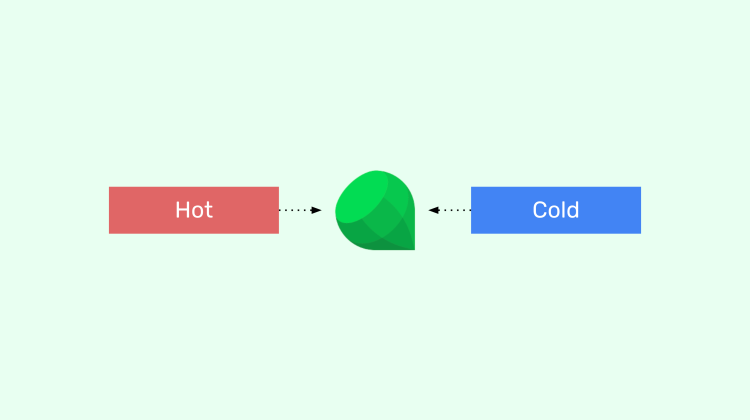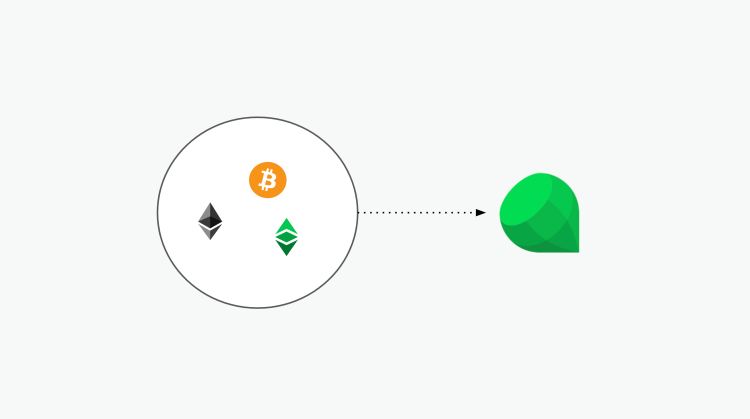Educational post: An explanation of what are hot and cold wallets.
You can watch this educational content here:
The main difference between hot and cold wallets is security. Hot wallets are less secure and cold wallets are more secure.
However, hot wallets are more convenient and cold wallets are less convenient. This is why people and businesses usually put smaller amounts of crypto assets in hot wallets to use on a daily or more frequent basis, and put the majority of their crypto to hold for longer periods of time in cold wallets.
In the following sections we explain the differences between hot and cold wallets in more detail.
1. What is a wallet in the first place?
A wallet in the context of a blockchain is the combination of a private key and an address on the blockchain.

The address is the account number on the blockchain where crypto assets are held, and the private key, which must be kept secret and safe, is the password that is used to control the address and the crypto assets associated to it on the blockchain.
2. What is a hot wallet?
A hot wallet is the setup where the private key is held inside a computer or phone in a wallet app and is used on a daily or more frequent basis to move crypto assets.
Hot wallets are called "hot" because they are readily available to receive and send crypto assets in devices of daily use that are connected to the internet.

The key features of a hot wallets are:
1. The private keys are on devices that are used regularly.
2. These devices are connected to the internet.
Even if private keys in hot wallets were never used (see explanation below), the setup is still called hot wallet because the private keys are readily available in devices for regular use and if they are lost, stolen, or hacked through the internet, the crypto assets may be stolen.
3. What is a cold wallet?
A cold wallet is a similar setup as above, but where the private key is actually separated from the devices that are used on a daily basis.
The private key may be located in hardware wallets or paper wallets, for example.

The key features of cold wallets are:
1. The private keys are separated from devices that are used regularly.
2. They are never connected to the internet.
3. They were never used to send transactions to the blockchain.
That the private key has never been used is important because once a transaction is signed with a cold private key, the metadata of that transaction contains information that may, however unlikely, be used to track or crack wallets, addresses, and their users.
4. Software wallets are usually hot wallets?
Because people usually have their private keys in wallets apps in their computers or phones for daily use, and they are always connected to the internet, software wallets are usually hot wallets.

This is why it is advisable to only have small amounts of crypto for daily use, dapp use, and payments in regular software wallets.
5. Hardware wallets may be hot or cold
Usually people call hardware wallets "cold wallets", but this is not necessarily true. The truth is that you may have both hot and cold wallets inside hardware wallets.

Of all the wallets one may have inside a hardware wallet, the ones that were used to sign and send transactions to the blockchain are really hot wallets. This is because the process of signing transactions and sending them to public blockchains may be insecure in itself.
However, the private keys that are inside hardware wallets that have never been used to send transactions are, indeed, cold wallets.
Because to use cold wallets in hardware wallets is more inconvenient but more secure than hot wallets, usually people have larger amounts of crypto there for the long term.
6. Paper wallets may be hot or cold
Just as with hardware wallets, paper wallets become hot wallets, even if still kept in paper, if they were used to sign transactions.

If a user has two paper wallets and one has been used to sign a transaction that was sent to the blockchain, and the other one has never been used to sign a transaction, the former is a hot wallet and the latter is a cold wallet.
7. Emerald may be used for hot and cold wallets
In our next educational post we will explain how Emerald may be used for both hot and cold wallets.
Thank you for reading this educational post!
Please remember to download Emerald here:
https://emerald.cash/download/



